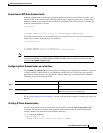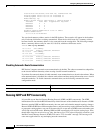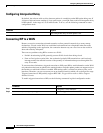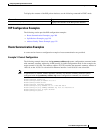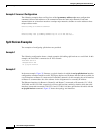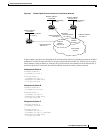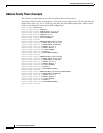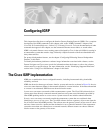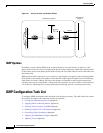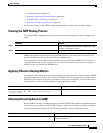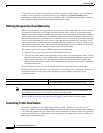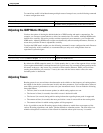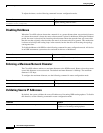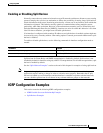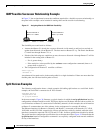
IPC-213
Cisco IOS IP Configuration Guide
Configuring IGRP
This chapter describes how to configure the Interior Gateway Routing Protocol (IGRP). For a complete
description of the IGRP commands in this chapter, refer to the “IGRP Commands” chapter of the
Cisco IOS IP Command Reference, Volume 2 of 3: Routing Protocols. To locate documentation of other
commands that appear in this chapter, use the command reference master index, or search online.
IGRP is a dynamic distance-vector routing protocol designed by Cisco in the mid-1980s for routing in
an autonomous system that contains large, arbitrarily complex networks with diverse bandwidth and
delay characteristics.
For protocol-independent features, see the chapter “Configuring IP Routing Protocol-Independent
Features” in this book.
To identify the hardware platform or software image information associated with a feature, use the
Feature Navigator on Cisco.com to search for information about the feature or refer to the software
release notes for a specific release. For more information, see the “Identifying Supported Platforms”
section in the “Using Cisco IOS Software” chapter in this book.
The Cisco IGRP Implementation
IGRP uses a combination of user-configurable metrics, including internetwork delay, bandwidth,
reliability, and load.
IGRP also advertises three types of routes: interior, system, and exterior, as shown in Figure 36. Interior
routes are routes between subnets in the network attached to a router interface. If the network attached
to a router is not subnetted, IGRP does not advertise interior routes.
System routes are routes to networks within an autonomous system. The Cisco IOS software derives
system routes from directly connected network interfaces and system route information provided by
other IGRP-speaking routers or access servers. System routes do not include subnet information.
Exterior routes are routes to networks outside the autonomous system that are considered when
identifying a gateway of last resort. The Cisco IOS software chooses a gateway of last resort from the
list of exterior routes that IGRP provides. The software uses the gateway (router) of last resort if it does
not have a better route for a packet and the destination is not a connected network. If the autonomous
system has more than one connection to an external network, different routers can choose different
exterior routers as the gateway of last resort.



